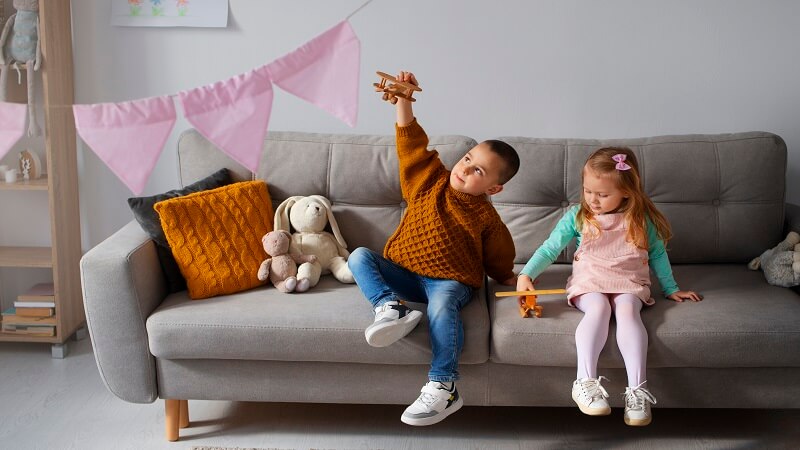Creating a home that is safe, stimulating, and accessible for children can make daily family life more harmonious and help foster a nurturing environment for your little ones. Whether you’re designing a new space or modifying your existing abode, these eight tips will help you craft a kid-friendly home that caters to the needs of both children and adults.
1. Prioritize Safety in Every Room
Safety is paramount in a home with children. Start by securing furniture to walls to prevent tipping hazards and install safety gates at the top and bottom of staircases. Ensure that all electrical outlets are covered, and corners of furniture are cushioned to avoid injuries. Regularly check your home for small objects that could pose choking hazards to young children.
2. Embrace Flexible Storage Solutions
Kids come with lots of stuff, from toys to books to crafts supplies. Flexible storage solutions, such as bins and baskets that can be easily moved around, are essential. Consider using clear containers so that children can see what’s inside and retrieve items independently. Open shelves at a child’s height can also encourage them to pick up after themselves.
3. Choose Durable, Easy-to-Clean Materials
Opt for materials that can withstand the wear and tear of busy little bodies. Hard-wearing flooring like vinyl or tile, washable paint, and stain-resistant fabrics can save time and frustration. Such materials make it easier to keep your home clean and looking good, no matter what your kids throw at it (literally and figuratively).
4. Designate Play Areas
Dedicate specific areas in your home for play. This not only keeps toys from spreading across every room but also helps children feel ownership over their space. Whether it’s a corner of the living room or a whole playroom, ensure this area is comfortable and inviting with appropriate furniture and vibrant colors.
5. Incorporate Educational Elements
Integrate educational elements into your home to encourage learning through play. This could be as simple as including books on low shelves, having a globe or map on display, or setting up a small craft area where kids can draw, paint, and build. Educational posters or decals can also add a fun, learning twist to any room.
6. Foster Independence with Accessible Design
Design your space to help children act independently. Place everyday items like toys, clothes, and snacks within easy reach. Consider lower hooks for coats and step stools in bathrooms and kitchens to help them reach sinks and counters. This setup not only fosters independence but also helps in building their confidence.
7. Invest in Multifunctional Furniture
Look for furniture that can serve multiple purposes to make the most of your space. Beds with built-in storage, expandable tables, and convertible sofas are excellent for adapting to various needs throughout the day. These pieces are especially beneficial in smaller homes where space is at a premium.
8. Keep Adult Spaces in Mind
While it’s important to make your home child-friendly, it’s also vital to retain areas just for adults. This could be a study, a home gym, or even just a corner of your bedroom. Keeping these spaces off-limits to children can provide you with a sanctuary where you can relax and recharge.
Conclusion
Transforming your home into a child-friendly space does not require sacrificing style or comfort. With thoughtful design and strategic planning, you can create an environment that supports the growth and development of your children while also meeting the needs of adults. Remember, the goal is to craft a space that is safe, engaging, and inclusive for everyone in the family.
